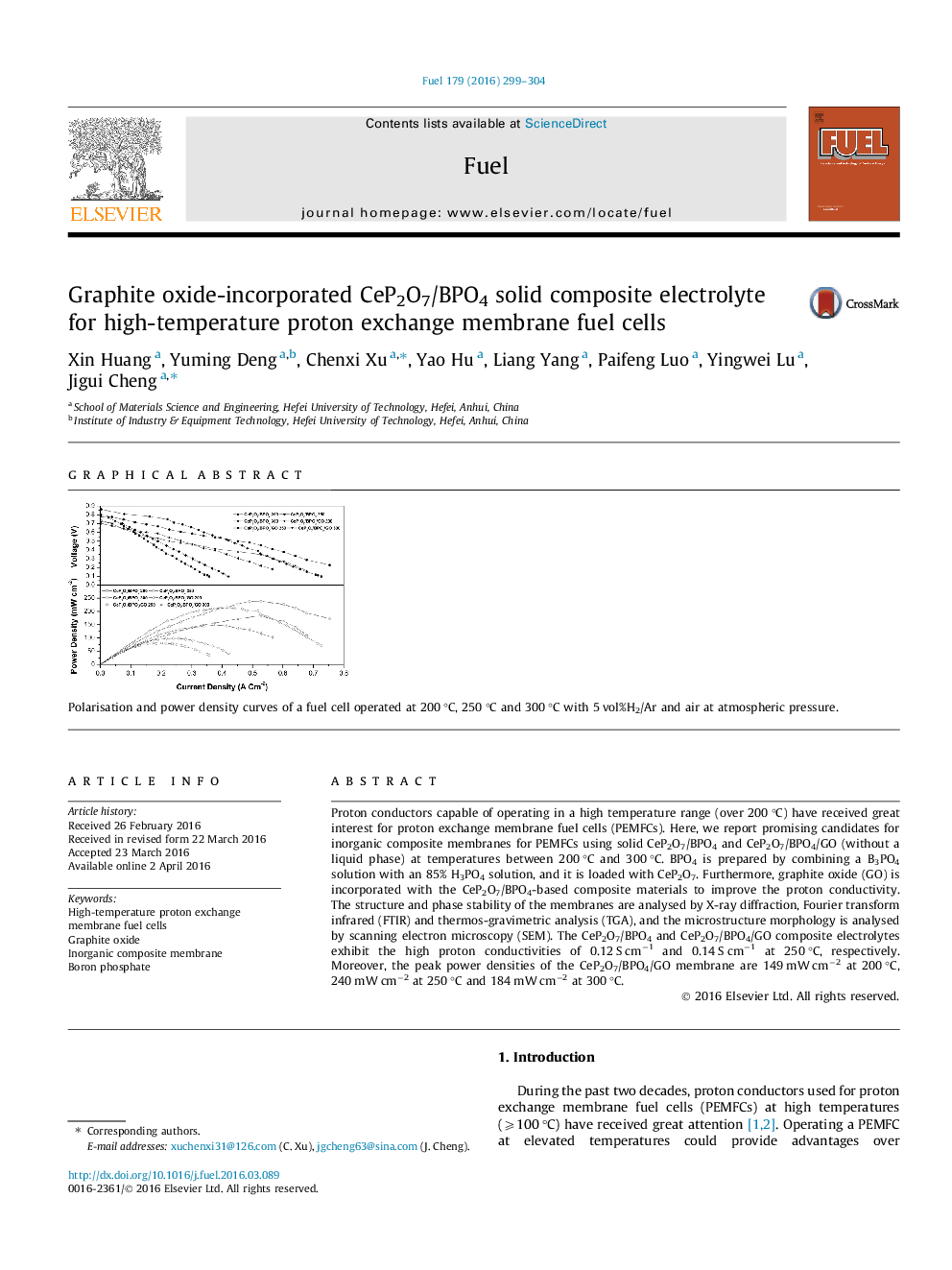| Article ID | Journal | Published Year | Pages | File Type |
|---|---|---|---|---|
| 205098 | Fuel | 2016 | 6 Pages |
Proton conductors capable of operating in a high temperature range (over 200 °C) have received great interest for proton exchange membrane fuel cells (PEMFCs). Here, we report promising candidates for inorganic composite membranes for PEMFCs using solid CeP2O7/BPO4 and CeP2O7/BPO4/GO (without a liquid phase) at temperatures between 200 °C and 300 °C. BPO4 is prepared by combining a B3PO4 solution with an 85% H3PO4 solution, and it is loaded with CeP2O7. Furthermore, graphite oxide (GO) is incorporated with the CeP2O7/BPO4-based composite materials to improve the proton conductivity. The structure and phase stability of the membranes are analysed by X-ray diffraction, Fourier transform infrared (FTIR) and thermos-gravimetric analysis (TGA), and the microstructure morphology is analysed by scanning electron microscopy (SEM). The CeP2O7/BPO4 and CeP2O7/BPO4/GO composite electrolytes exhibit the high proton conductivities of 0.12 S cm−1 and 0.14 S cm−1 at 250 °C, respectively. Moreover, the peak power densities of the CeP2O7/BPO4/GO membrane are 149 mW cm−2 at 200 °C, 240 mW cm−2 at 250 °C and 184 mW cm−2 at 300 °C.
Graphical abstractPolarisation and power density curves of a fuel cell operated at 200 °C, 250 °C and 300 °C with 5 vol%H2/Ar and air at atmospheric pressure.Figure optionsDownload full-size imageDownload as PowerPoint slide
